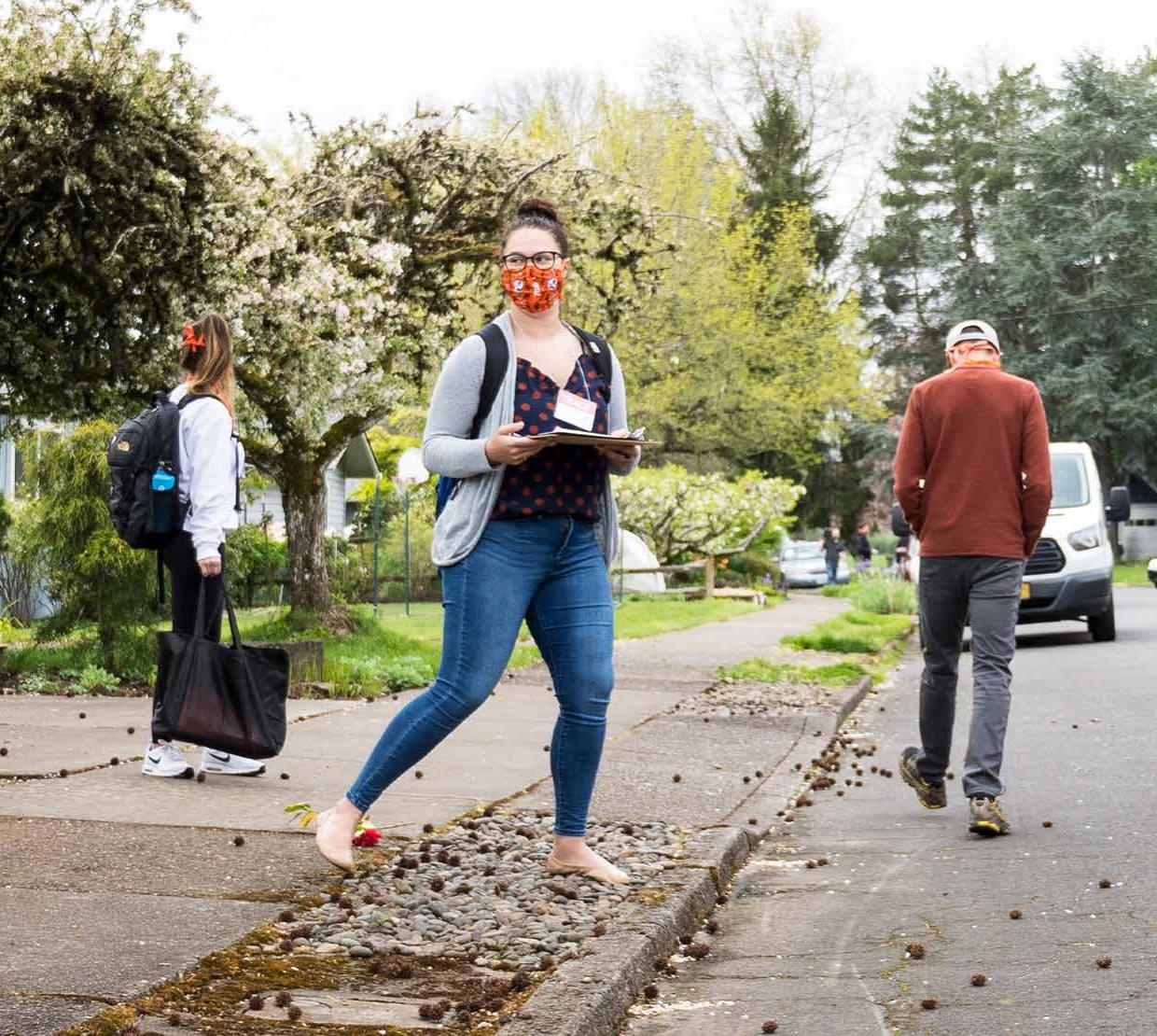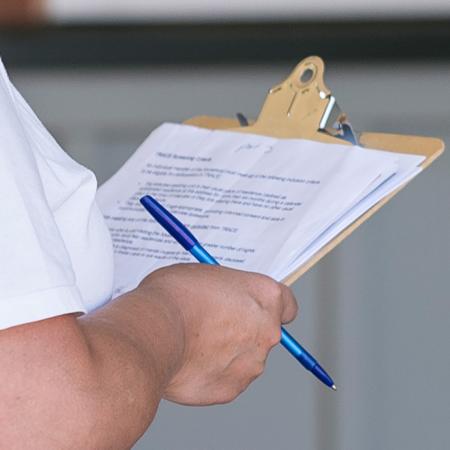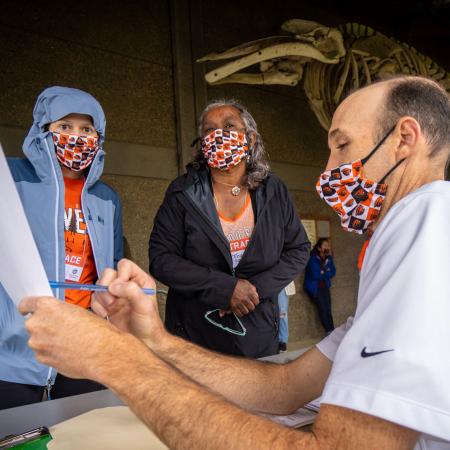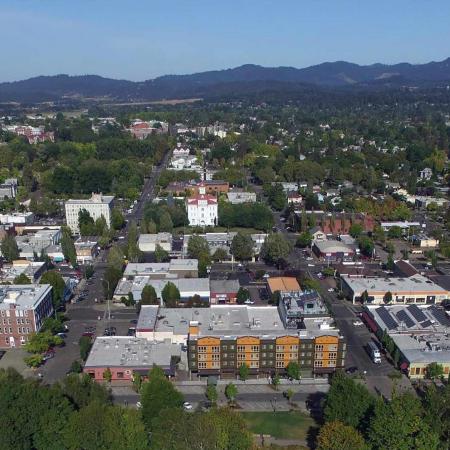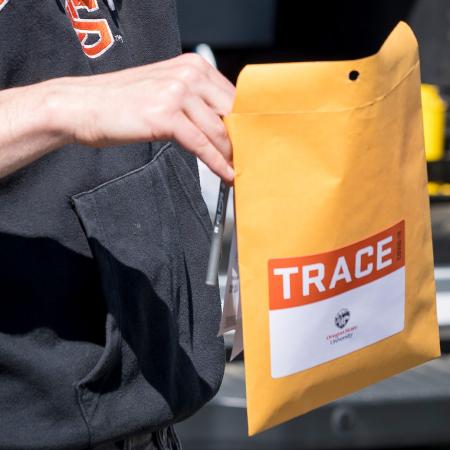CORVALLIS, Ore. — Dozens of community members from the Willamette Valley are stepping up to address COVID-19 as part of 30 teams that will be going door-to-door in Eugene this weekend offering free COVID-19 tests to up to 600 residents as part of Oregon State University’s TRACE Community testing project.
The teams include roughly 60 student workers, many of whom have experienced the impact of the pandemic up close. Among them are Johanna O’Shea, whose father spent a week in the hospital with COVID-19; Micaela Verbitsky, whose parents are frontline medical professionals; and Mia Niccol and Cimantha Hormel, who both have family members with compromised immune systems.
OSU is partnering with the University of Oregon for the Nov. 7-8 round of testing, which will allow the universities and the Lane County Health Department to gauge community prevalence of SARS-CoV-2, the virus that causes COVID-19.
The project complements work already being done by UO’s Monitoring and Assessment Program (MAP), which began with testing UO residence hall students and has now expanded to provide testing opportunities for all students, faculty and staff.
“I got involved in this because after months of doing nothing and just worrying about the pandemic, I finally found something that I can do to help the community and everybody around me,” said Verbitsky, 20, a UO junior double-majoring in chemistry and German. “On a personal level, it’s just good to know whether or not you are sick. Then for everybody, it’s good to have the numbers and to see how widespread the virus is in our community.
“The first step in fighting it is to identify how many people have it and how concentrated it is.”
Many of the students engaged in TRACE Community are interested in medicine or public health as a career.
Hormel, 19, is in her second year at Linn-Benton Community College and plans to transfer to OSU to continue her studies in human development and family sciences with a focus in human services.
She was encouraged when TRACE Community started because it provided a way for anyone chosen in the random sampling to be tested for free, regardless of whether they had insurance and despite the lack of available testing.
“COVID-19 has definitely had a very large impact on our lives in general, and is continuing to do so, and I feel like TRACE has relieved a little bit of that, just knowing that they’re helping figure out the virus a little bit more and the prevalence of it,” Hormel said. “It is for the community and for the members in it. We want to help them as much as we can, as well as get a better understanding of whatever exactly is going on here.”
Better understanding of the prevalence of the virus in Eugene will inform public health responses.
“I feel like it’s important for Eugene residents to get tested since there could possibly be more help for those who need it during this time — more resources, more outreach, things like that,” said Niccol, 19, a second-year human physiology major at UO. “The study could have a very big impact on the Eugene community.”
The TRACE tests are self-administered nasal swabs, not the nasopharyngeal swabs that go deep into the nasal passages. And the tests are free and voluntary.
“It’s a little disheartening to hear people say, ‘COVID’s not real; it’s like the flu,’” said O’Shea, 23, who graduated from OSU this spring with a degree in biology and a medical humanities certificate and plans to go into medicine. O’Shea’s father caught COVID while riding in a tow truck with an unmasked operator when his car broke down, and spent a week in the hospital battling pneumonia, despite being healthy and an avid cyclist. Still, she says she’s one of the lucky ones: Her dad is still here.
“I feel more sad for the people who lost a family member,” she said. “That’s definitely reinforced my desire to be involved and to spread the word and educate people with what I know. Pursuing medicine has fundamentally affected how I see a pandemic because I personally feel responsible to take this pandemic seriously if I am planning on working in a health setting.”
This story was originally posted by the Oregon State University newsroom.
